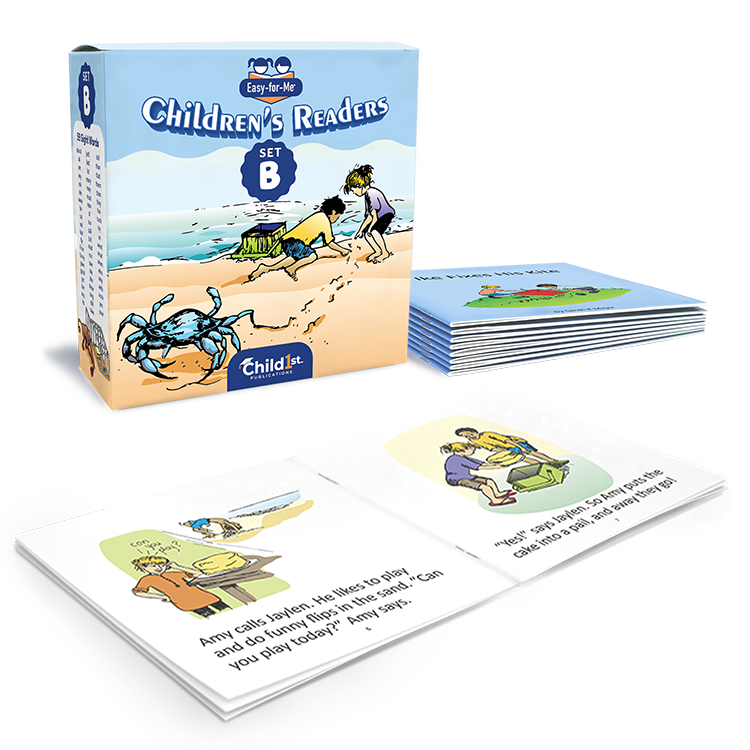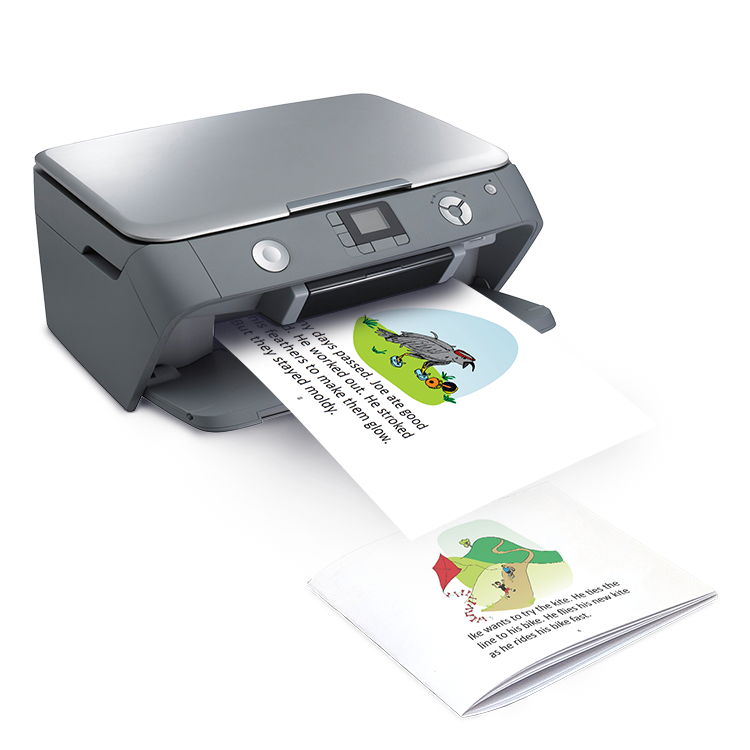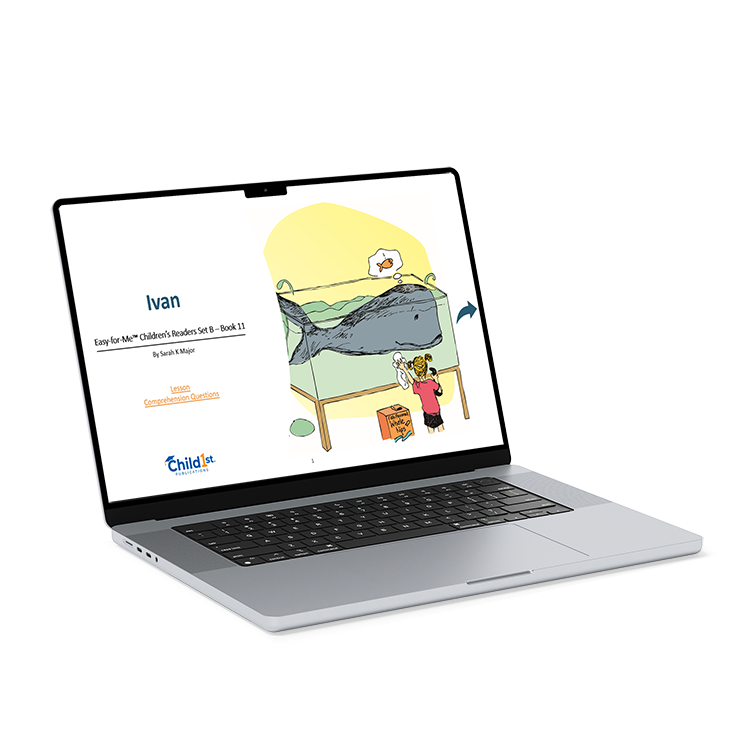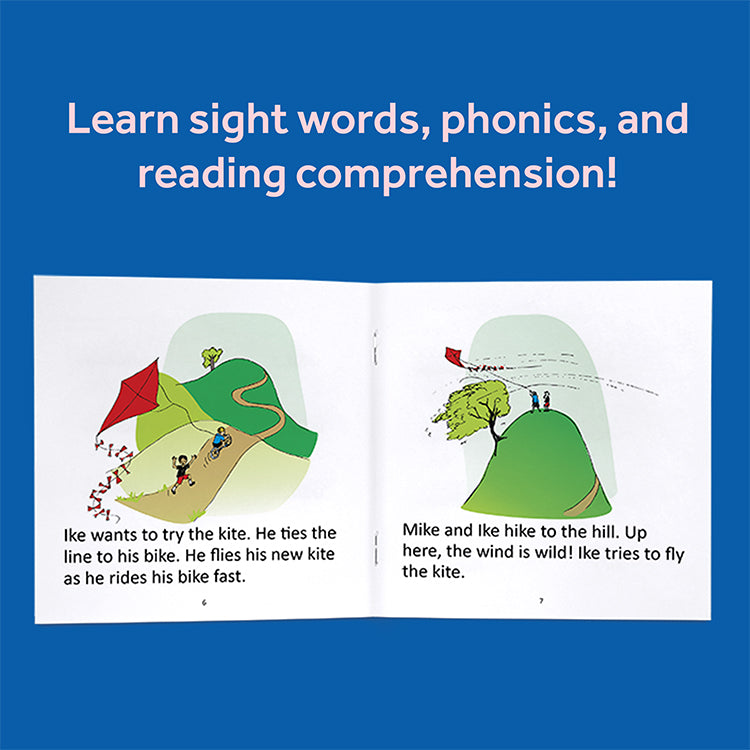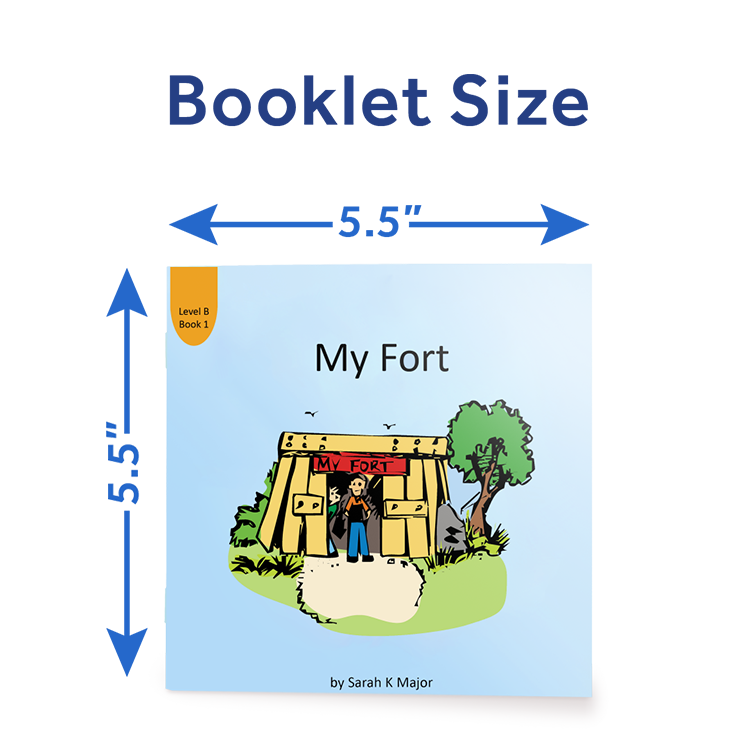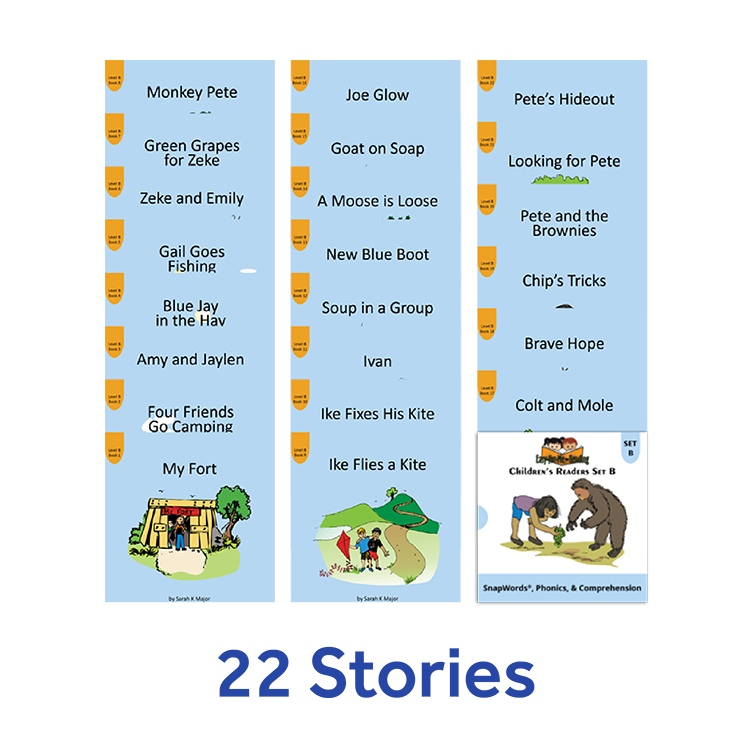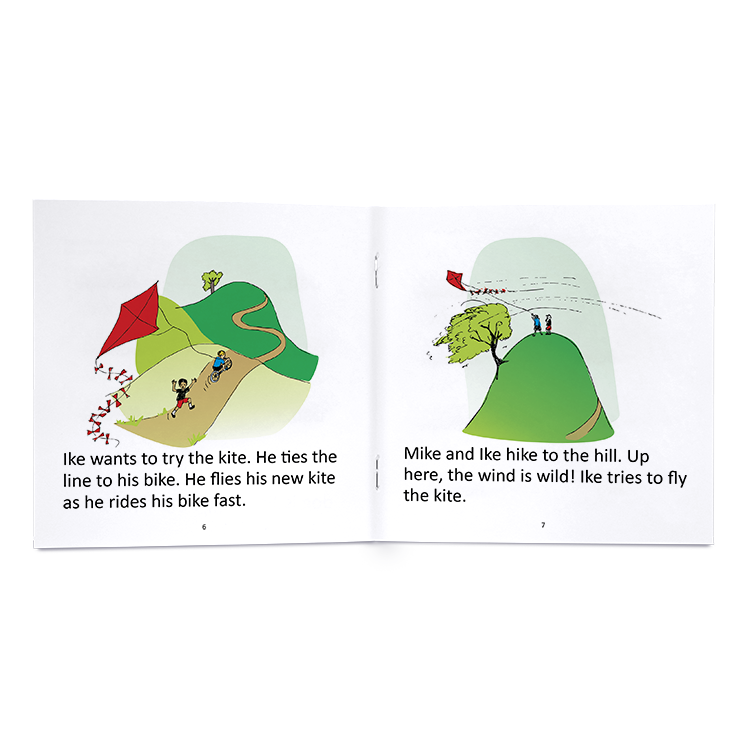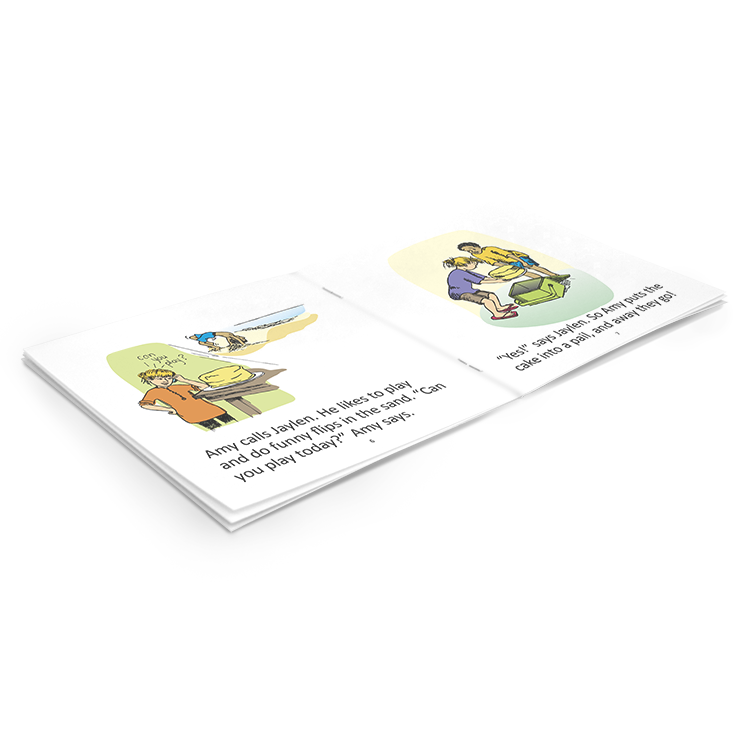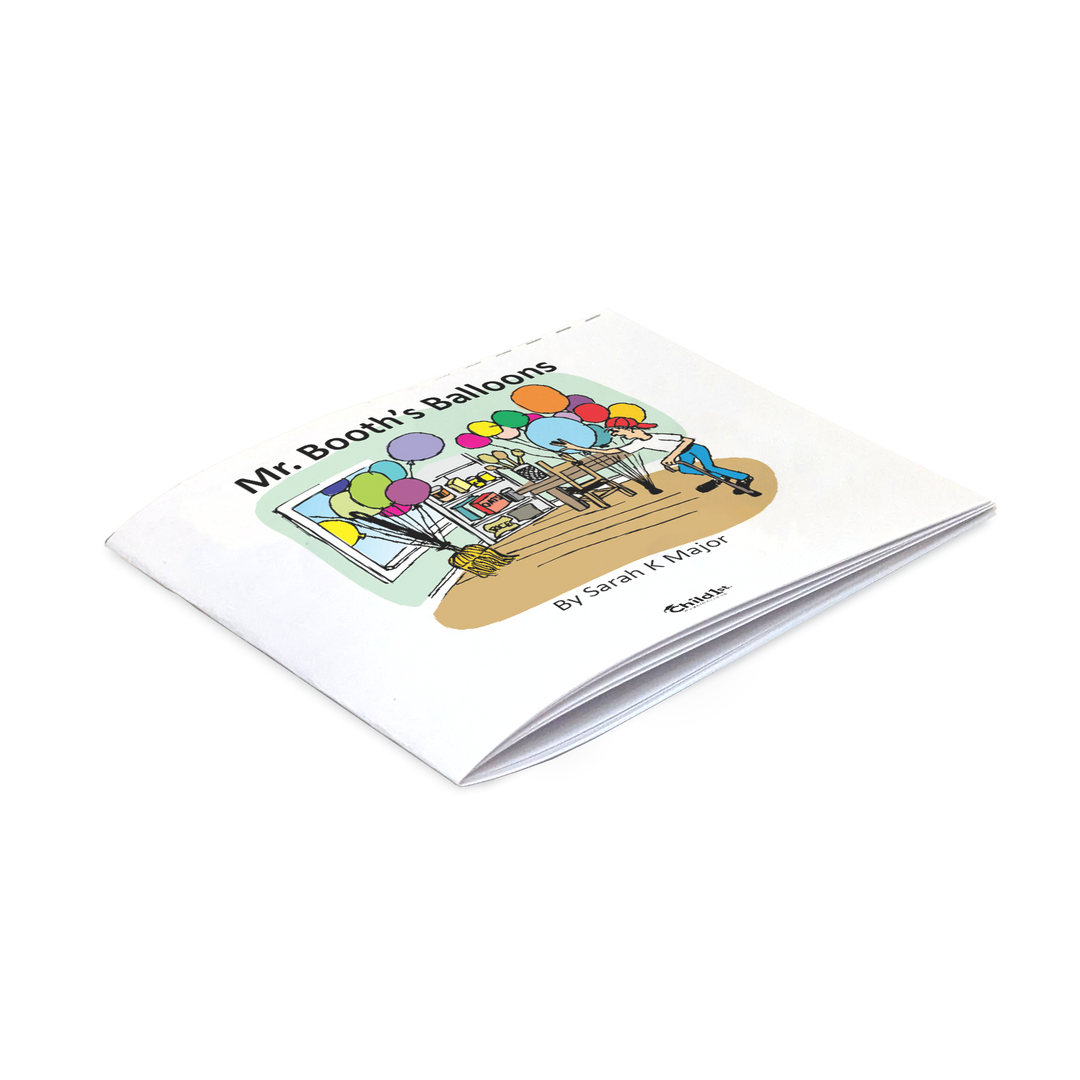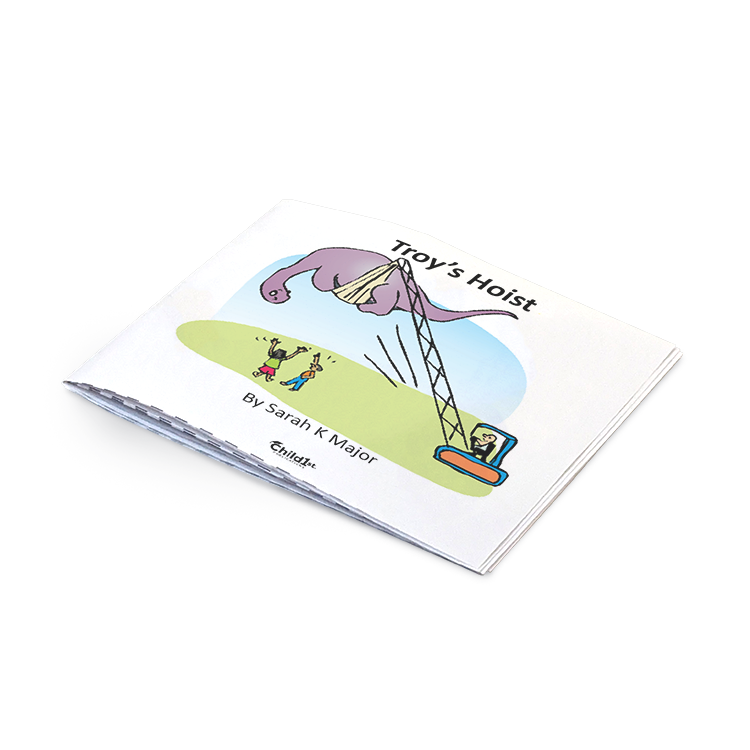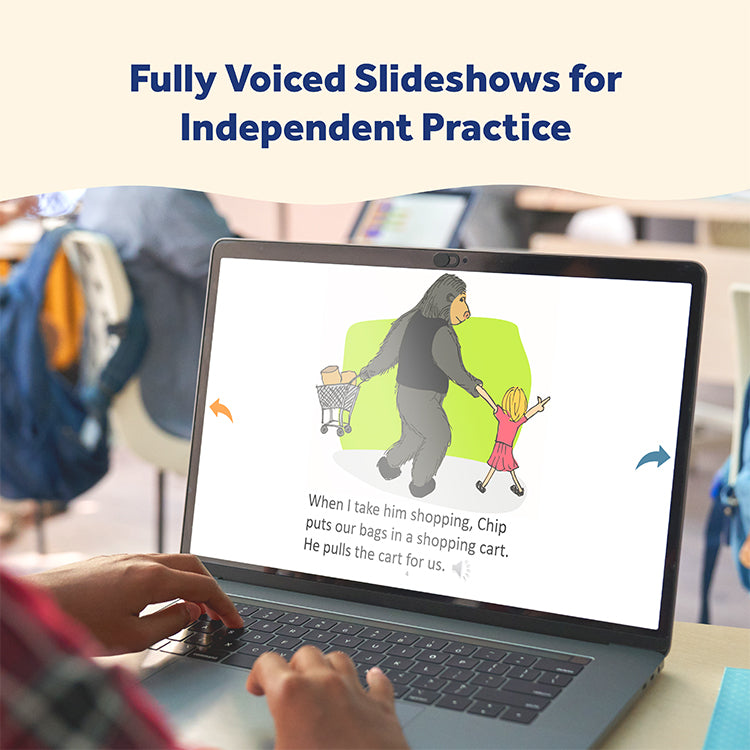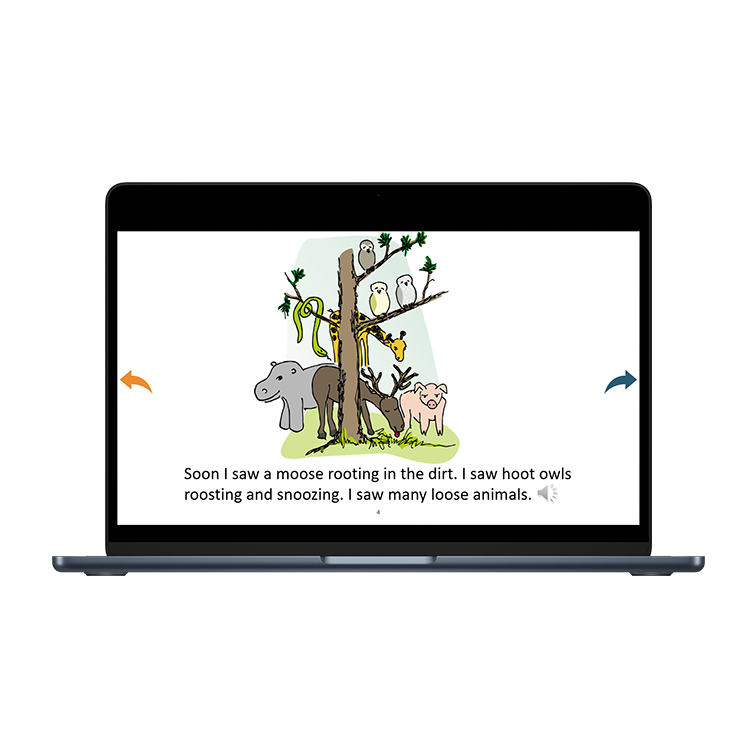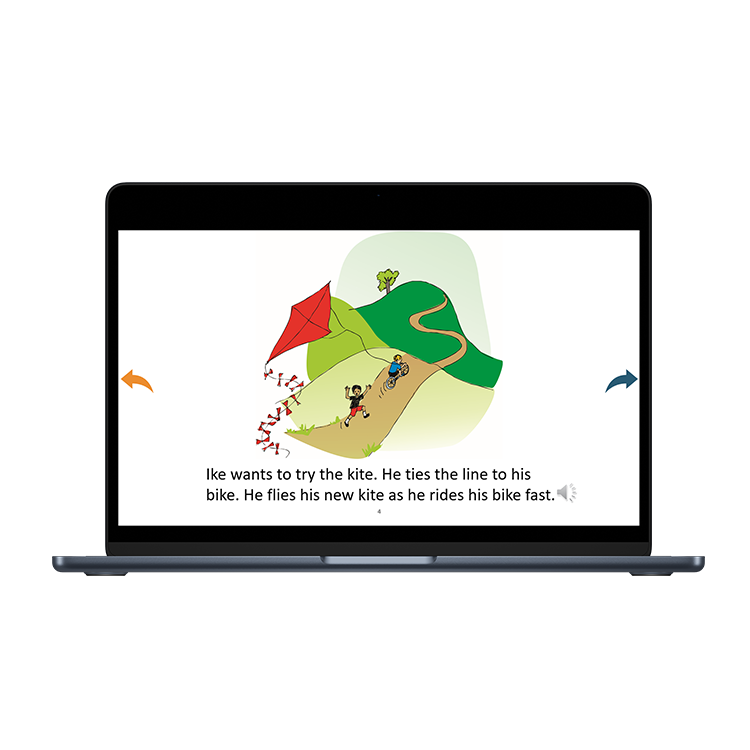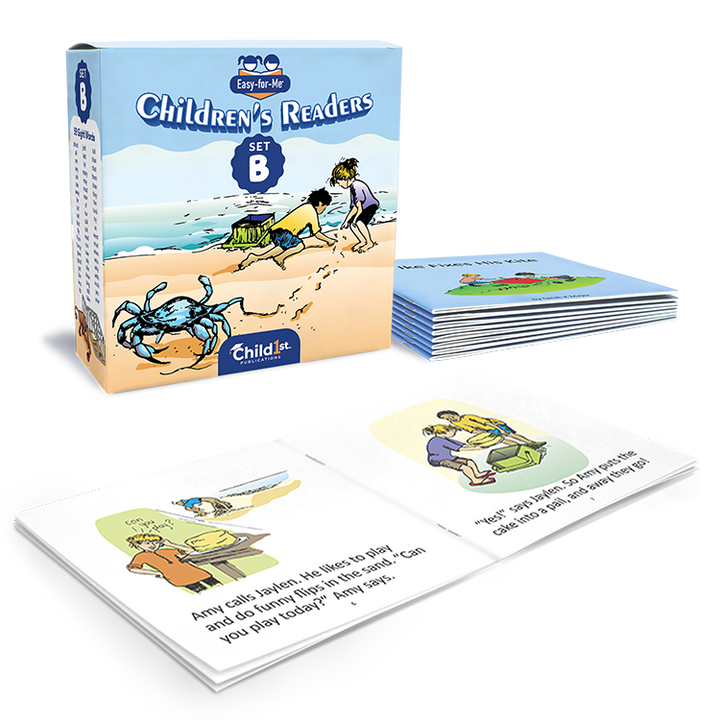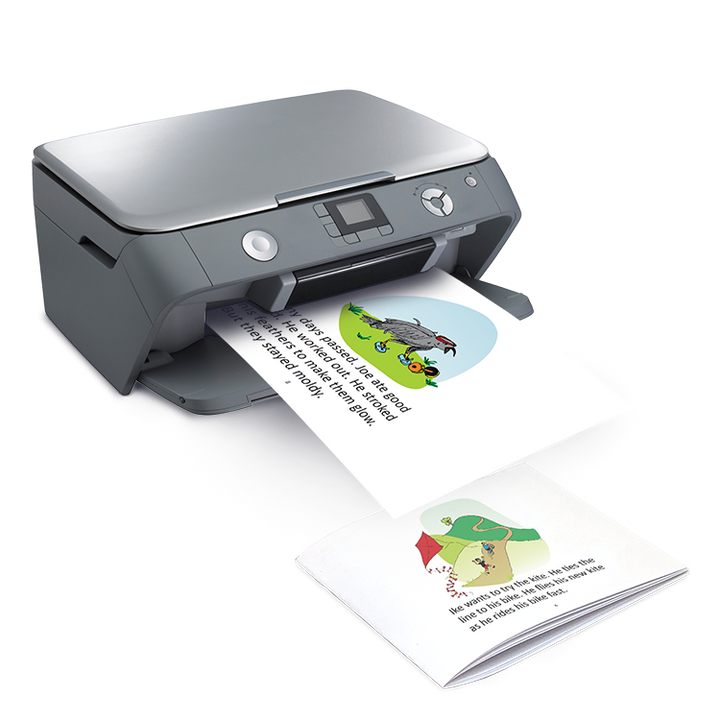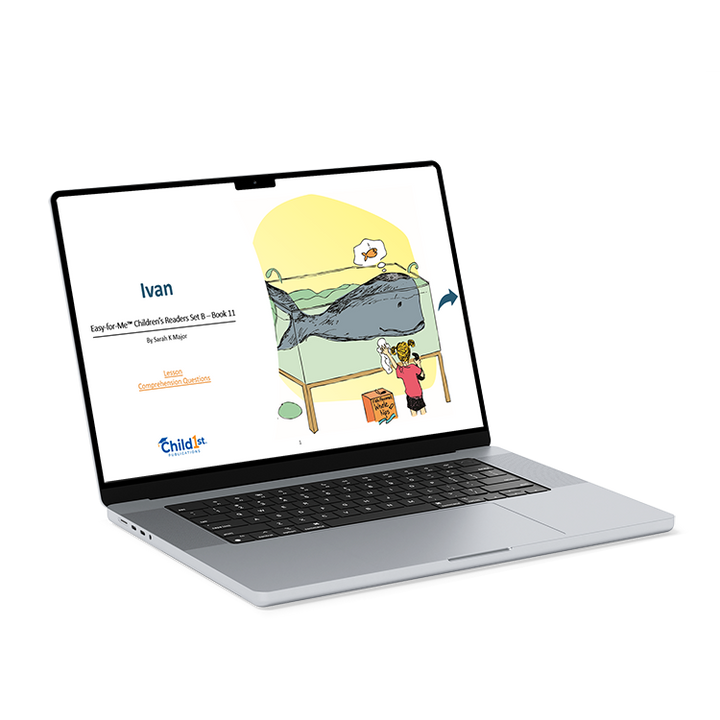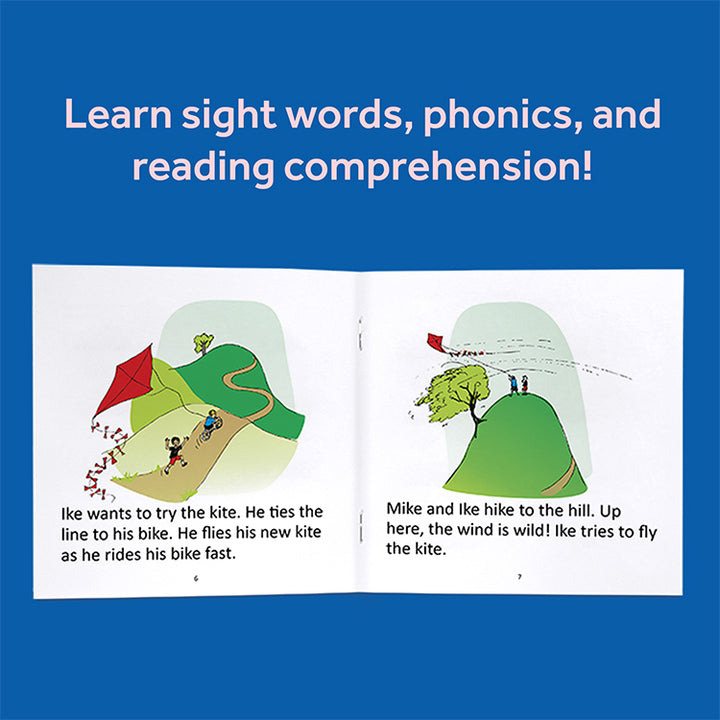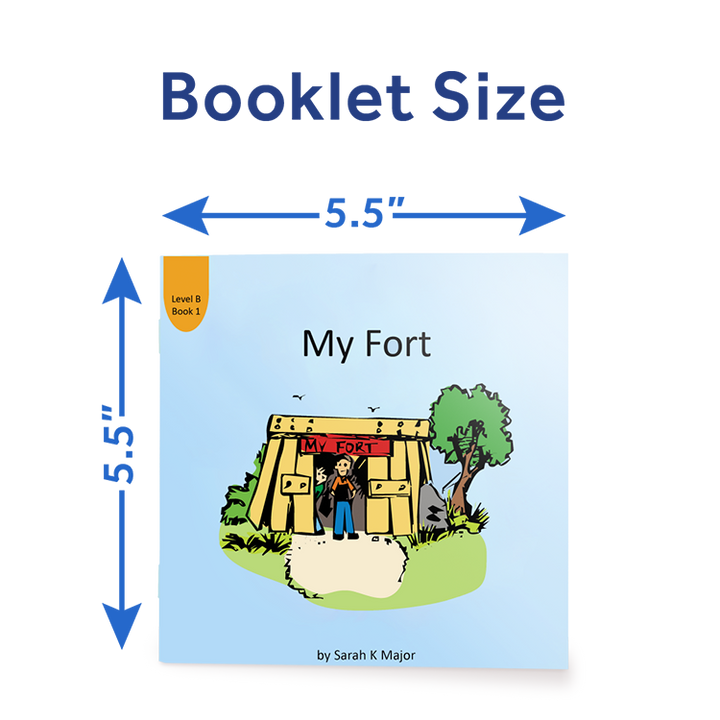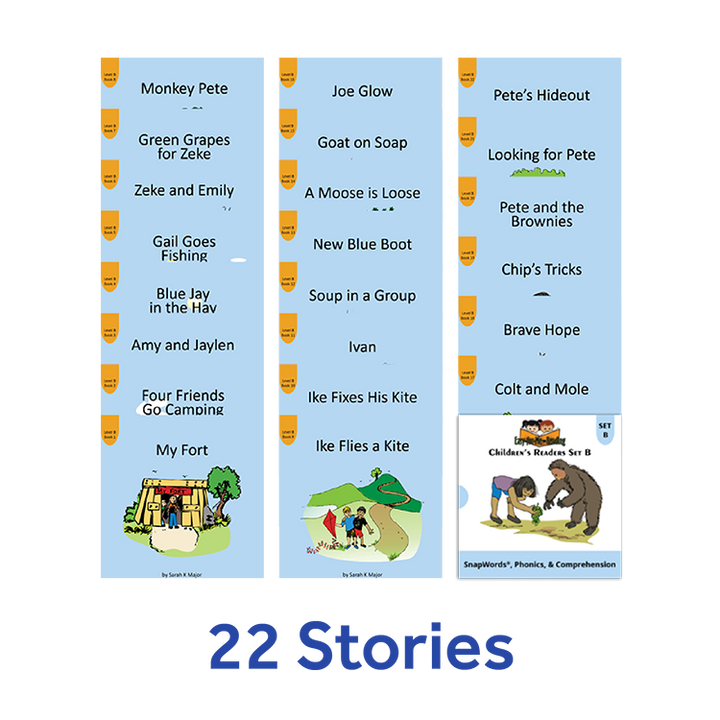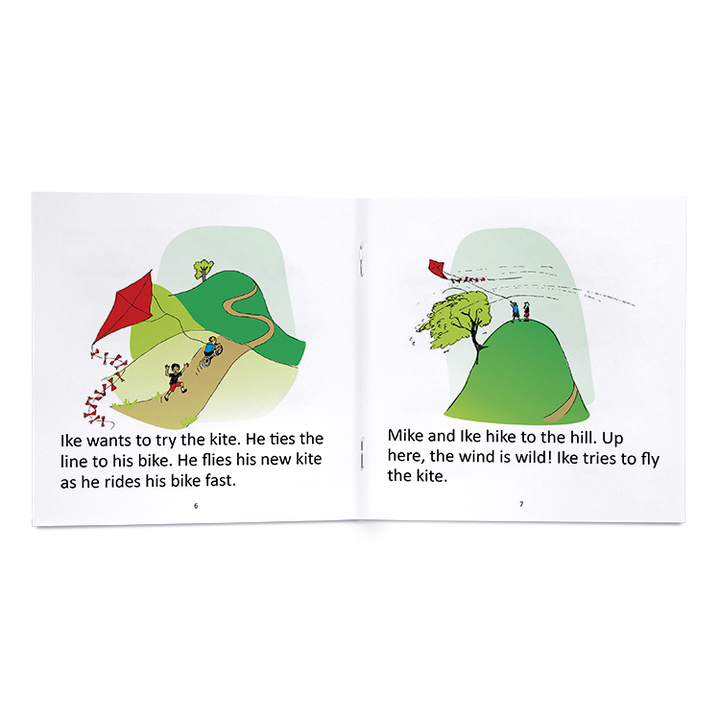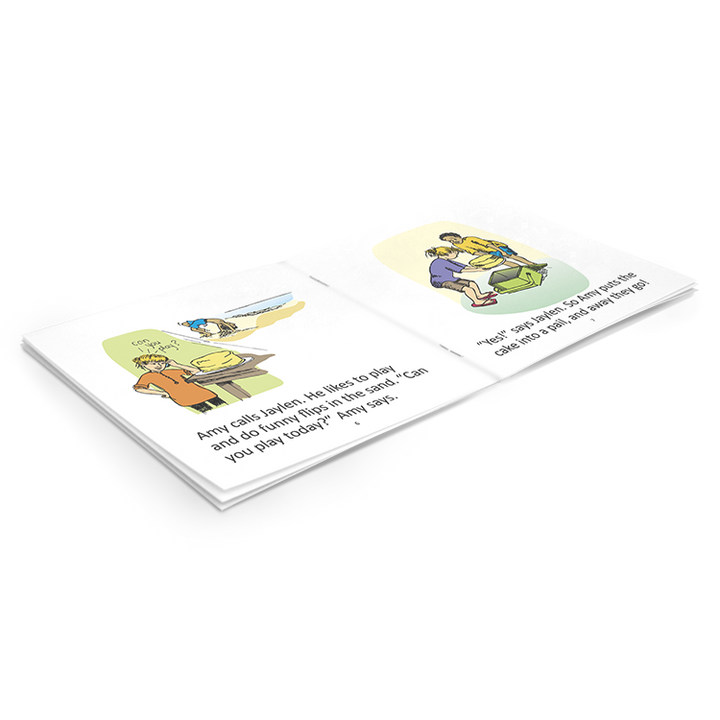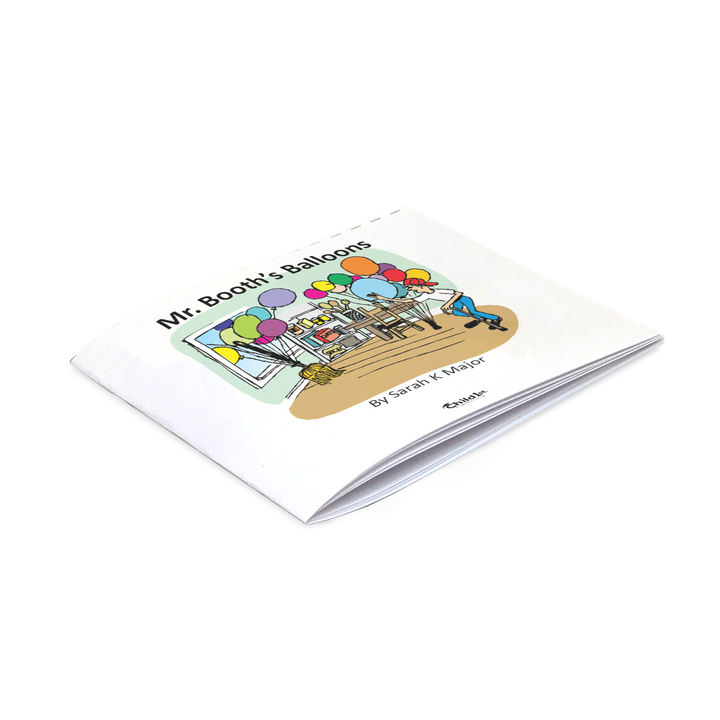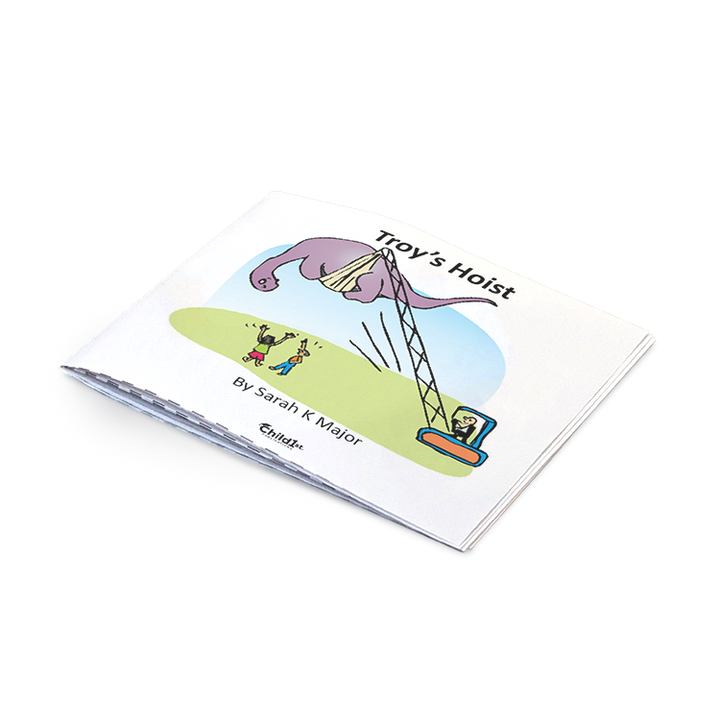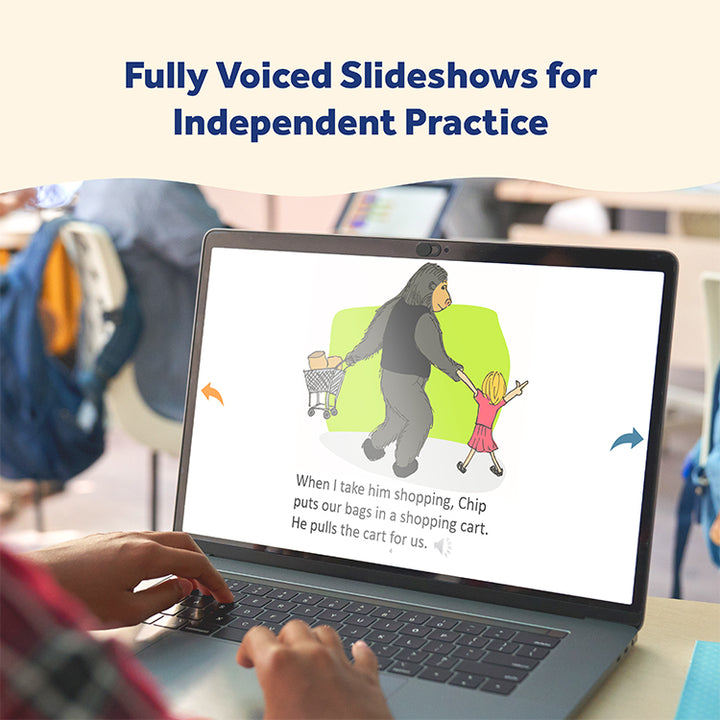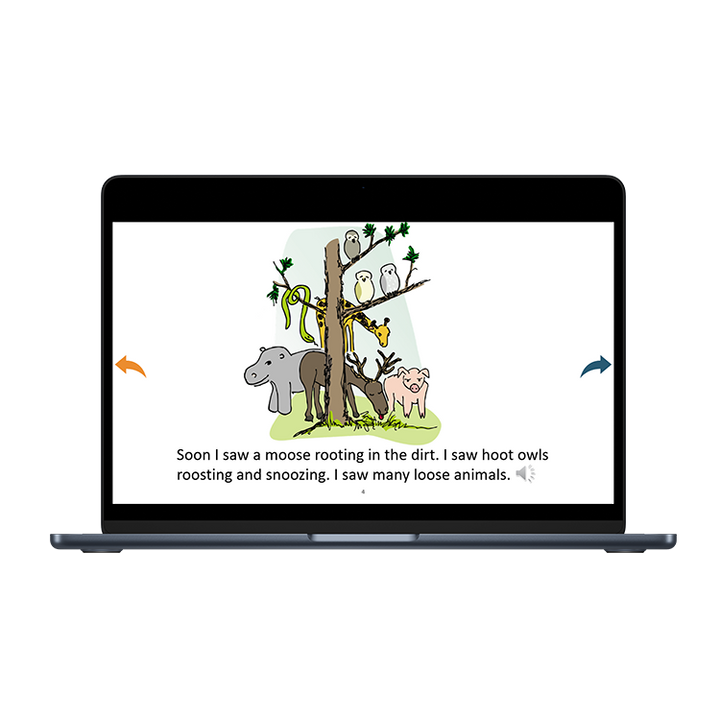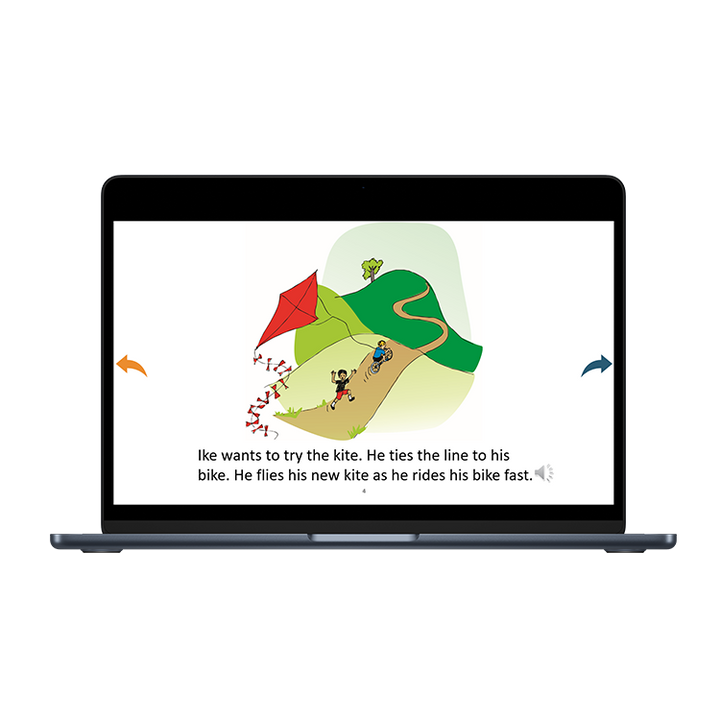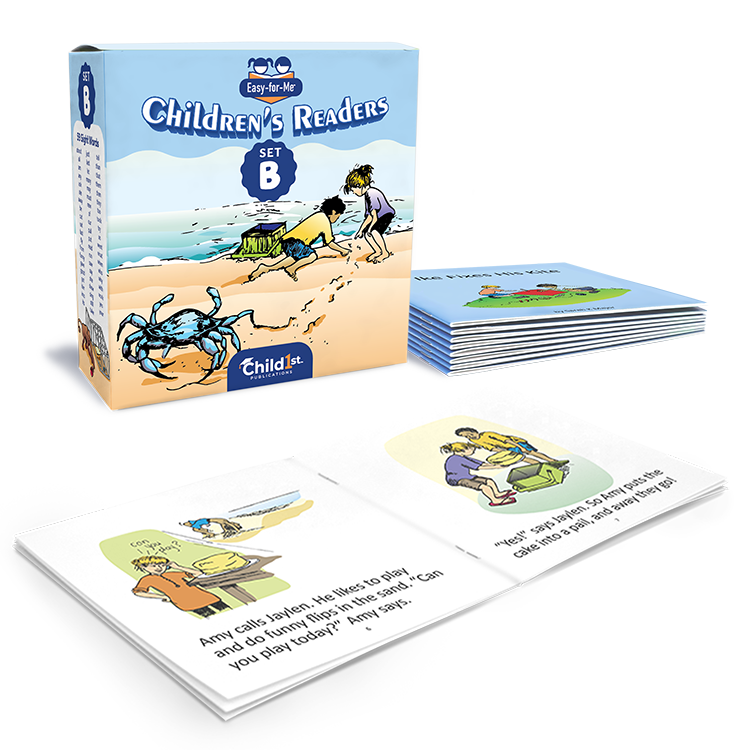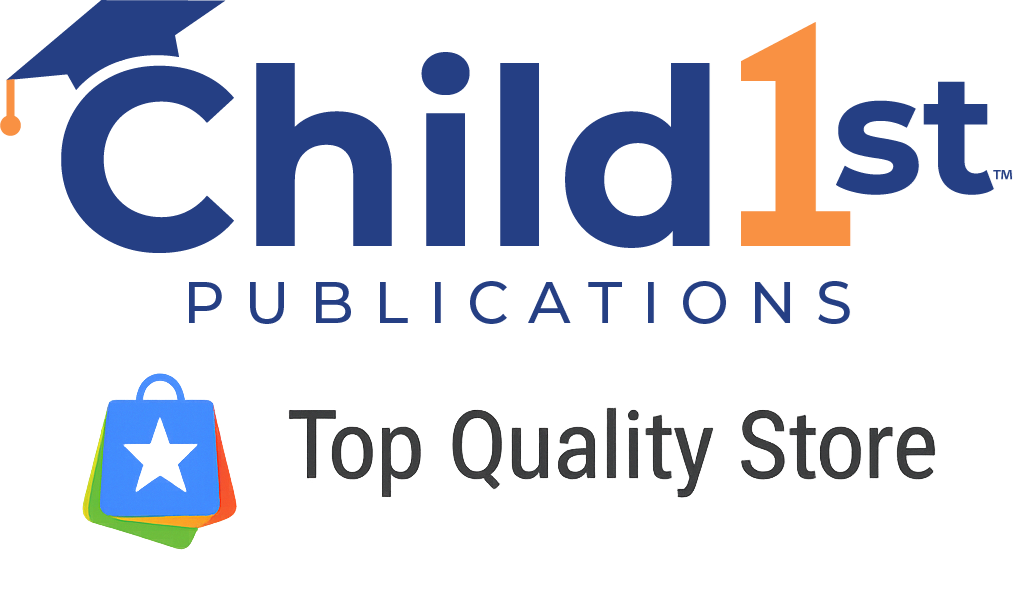Unlock the next level of reading success with Easy-for-Me™ Children's Readers Set B! This dynamic set kicks off by reinforcing short vowel sounds and swiftly progresses to long vowel spellings. Delve into the richness of language as Set B covers multiple ways to spell each long vowel, along with teachings on OO spellings, R-controlled spellings, digraphs, plurals, possessives, NG and NK endings, and more. With the inclusion of all 59 words from SnapWords® List B, this set ensures a comprehensive and engaging reading experience. Watch as young readers soar to new heights with each turn of the page!
What’s Included
Set B Readers include 22 full-color, 12-page stories with storage sleeve, covering:
All the ways to spell each long vowel, OO spellings, R-controlled spellings, digraphs, possessives, plurals, NG and NK endings, reading practice for all 59 words from SnapWords® List B, and more



